Last Thursday we met at a very big game (which was played by 5 gamers together with 2 umpires). The idea was to show us the new version of Sharpe Practice, or where the rules are now. After trying the published set week before I had finally made my opinion about it.
W ostatni czwartek spotkaliśmy przy bardzo dużej grze (w której wzięło udział 5 graczy wraz z dwoma prowadzącymi). Chodziło w głównej mierze, by pokazać nam nową wersję Sharpe Practice, lub bardziej na jakim poziomie zasady znajduja się obecnie. Po spróbowaniu opublikowanych zasad tydzień wcześniej w końcu mam jakąś o nich opinię.
SCENARIO/SCENARIUSZ: Jack Glanville
UMPIRING/PROWADZENIE GRY: Jack Glanville, Derek Hodge
SCENERY/SCENERIA: SESWC
FIGURES/FIGURKI: Angus Konstam, Chris Henry
In our game the rebelled Indian forces (Campbell Hardie and myself) defended city against British forces (Angus Konstam, Ken Pearce, Chris Henry). Pregame preparations of the battlefield and the forces, the gaming cards etc. took a lot of time and our umpires forgot to set a tasks for the sides, however I am not going to blame them for this as the game was really big and it could be missed. Any way later during the game boys fixed this problem and figured the idea of saving the British observer from the town together with map with marked the positions of whole rebelled forces. During the game they save the observer, however without the map.
W naszej grze zbuntowane indyjskie siły (Campbell Hardie i ja) bronilismy miasta przeciw siłom brytyjskim (Angus Konstam, Ken Pearce, Chris Henry). Przygotowania do gry, takie jak: pole bitw siły i karty do gry zajęły dość dużo czasu i naszym prowadzącym umknęło ustalenie celów gry dla stron. Nie winiłbym ich jednak za to, ze względu na fakt że gra była naprawdę bardzo duża. Zresztą w trakcie gry panowie rozwiązali ten problem i wymyślili brytyjskiego obserwatora, posiadającego mapę z zaznaczonymi pozycjami rebelinatów, którego należało uwolnić z miasta. W czasie gry obserwatora udało się uratować, jednak bez mapy.
What happened during the game? British forces moved close to the town, took defending positions on the outskirts of the town and there waited for the Indian forces. Meanwhile Indians moved to the borders of the town and prepared for the assault. Unfortunately for them they met heavy fire of regular British forces and had to withdraw (at least some of them). That allowed some British forces to enter the town, where they get under the fire from the Indians and this forced to withdraw from the town. That pretty much finished the game with the draw, as the British did not decided to enter the town and Indians were not able to move out of the town to destroy the invaders.
Co zdarzyło się podczas gry? Brytyjskie oddziały zbliżyły się do miasta, zajęły obronne pozycje na jego krańcach, gdzie oczekiwały na siły indyjskie. W międzyczasie oddziały indyjskie ruszyły do granic miasta i przygotowały się do uderzenia. Niestety dla nich, spotkały sie tu z silnym ogniem regularnych oddziałów brytyjskich i musiały się wycofać (przyzęść z nich). To pozwoliło części oddziałom brytyjskim wejść do miasta, jednak tu znaleźli się pod ostrzałem odziałów indyjskich i to zmusiło ich do wycofania się. To w głównej mierze zakończyło grę remisem, ponieważ Brytyjczycy nie zdecydowali się wejść do miasta a siły indyjskie nie mogły wyjść z miasta by zniszczyć najeźdźców.
Now is the time to compare both sets of rules. First of all I am not big enthusiast of the card driven games, especially when during the game every unit or officer have their own card when they can be activated. Specially I don't like when together with it comes "the end of turn", "tea time" or whatever we called this cards. This usually lead to situation when the unit stuck on the battlefield in unnatural way. Here the system trying to solve the problem by special cards, which can be used any time during the game for any of the units (not officers, which excluded bigger formations created during the game). Despite of that, during the game we had, in my opinion very strange situation, which not supposed to happend. My mob in the open get under the heavy fire from the British forces. Becouse of that fire I lost the officer who commanded that mob. According the rules it cannot react different than on card, but in my opinion it should in that moment withdraw to the closest cover (if it hasn't been activated during that turn yet), but they did not. However from other reports and my experience I know that kind of situation happend in similar systems. From other things changed from the oryginal version, the ranges for whole weapons are the same, however the hit modificators are different for thedifferent kind of weapons. That is actually very good solution, as it simplify the game, however that not met the understanding from some part of the gamers. Rest of the rules remain untached or the differences are not very big.
Teraz czas na porównanie obu zasad. Po pierwsze nie jestem zbyt wielkim entuzjastom gier, gdzie jednostki, bądź oficerów uaktywnia się tylko na ich własne kar. Specjalnie gdy razemartami dochodzą karty typu "koniec tury", "tea time" lub jakkolwiek inaczej byśmy je nazwali. To oczywiście prowadzi do sytuacji gdzie niektóre oddziały moga utknąć na polu bitwy w nienaturalny sposób. Tutaj system próbuje sobie poradzić poprzez specjalne karty, które można użyć do aktywacji pojedynczych oddziałów (jednak nie oficerów, co wyklucza aktywację większych formacji stworzonych w trakcie gry). Pomimo jednak tego, w trakcie gry mieliśmy dziwną sytuację, która moim zdaniem nie powinna się zdarzyć. Mój tłum dostał sie pod ciężki ogień reguralnej piechoty brytyjskiej, w winiku którego zginął oficer dowodzący tym tłumem. Zgodnie z zasadami straciłem kontolę nad tym tłumem, ponieważ mógł on byc aktywowany jedynie na kartę, lecz w mojej opinii w takiej sytuacji powinien on bez względu na kartę wycofać się za najbliższą osłonę (jeśli oczywiście w tej turze nie był on jeszcze aktywowany). Jednakże z własnego doświadczenia, jak i opisów gier innych graczy, wiem, ze taka sytuacja jest dość powszechna w podobnych systemach. Z innych zmian warto wspomnieć ujednolicenie zasięgów dla wszystkich broni, jednakże modyfikatory do trafienia wciąż sa różne. Według mnie to jest akurat dobre rozwiązanie, które znacznie upraszcza grę, jednak cześci graczy się ona nie spodobała. Reszta zasad pozostaje niezmienna lub została zmieniona w sposób nieznaczny.
Summarize, the system will be good if only the way the units are activated will be changed. I would suggest something like the Chain of Command way. If the card system must remain and I think it will, I suggest change the ending turn procedures. For example, all units who suffered casualties need to take morale test or something like this and if failed need to withdraw or etc. I know that guys from Too Fat Lardies will figure it something out, as they always do.
Podsumowując, system będzie naprawdę dobry, jeśli zmieni się sposób aktywacji. Ja sugerowałbym pójście w kierunku czegoś na kształt Chain of Command. Jeśli jednak system karciany musi pozostać, a wydaje się że musi, to sugerowałbym zmianę procedur końca tury. Na przykład zmuszenie wszystkich jednostek, które poniosły jakieś straty do czegoś w rodzaju testu morale i jeśli by go nie zdały wtedy do wycofania się lub do czegoś w tym rodzaju. Wiem, że tam w Too Fat Lardies jakoś ten problem rozwiążą.
Some links:
Kilka linków:
Some pictures from the game on our club's facebook page (by Campbell):
Kilka zdjęć na profilu facebookowym naszego klubu (napisane przez Campbella):
My gallery on Flickr:
Moja galeria na Flickr:
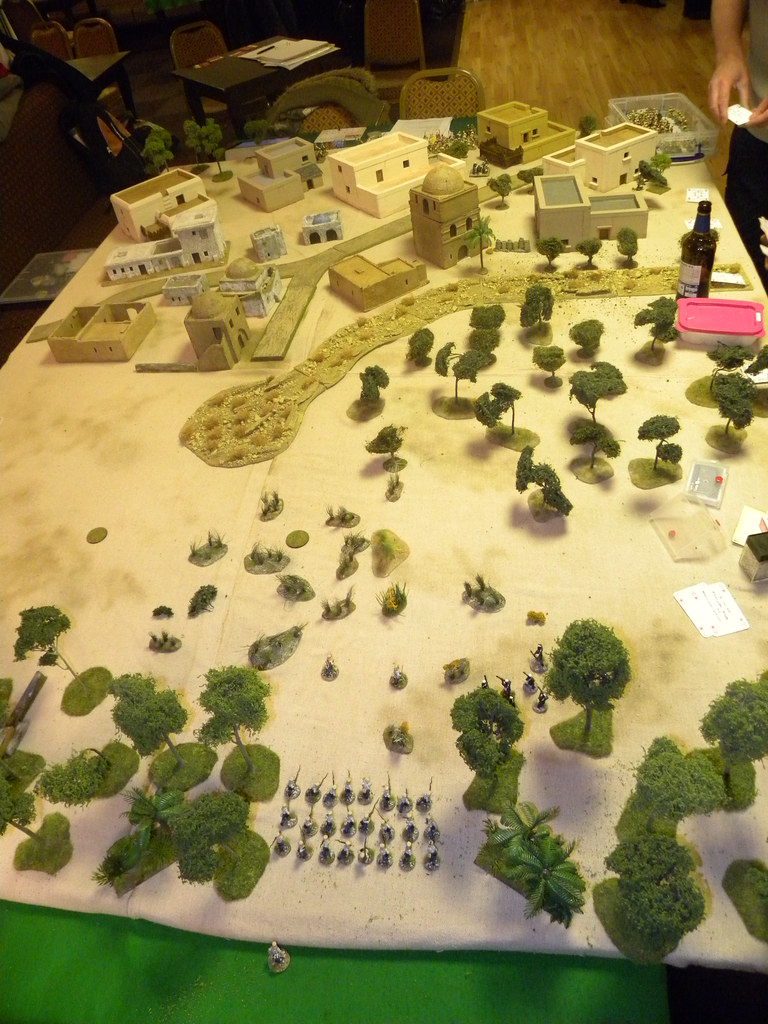
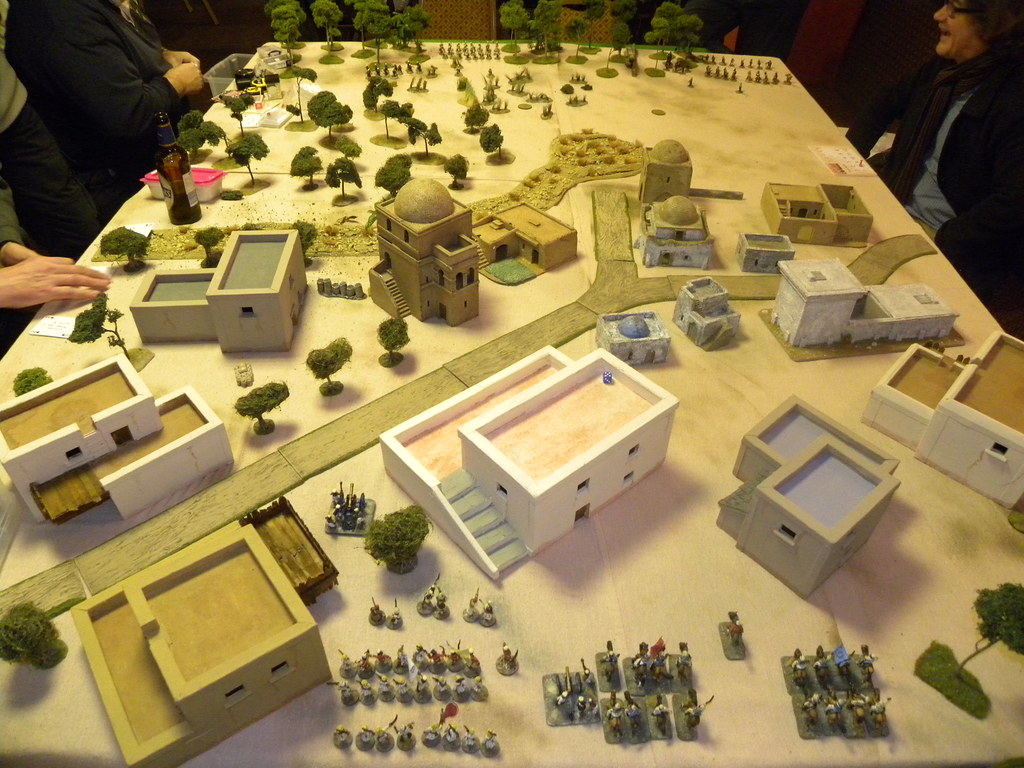

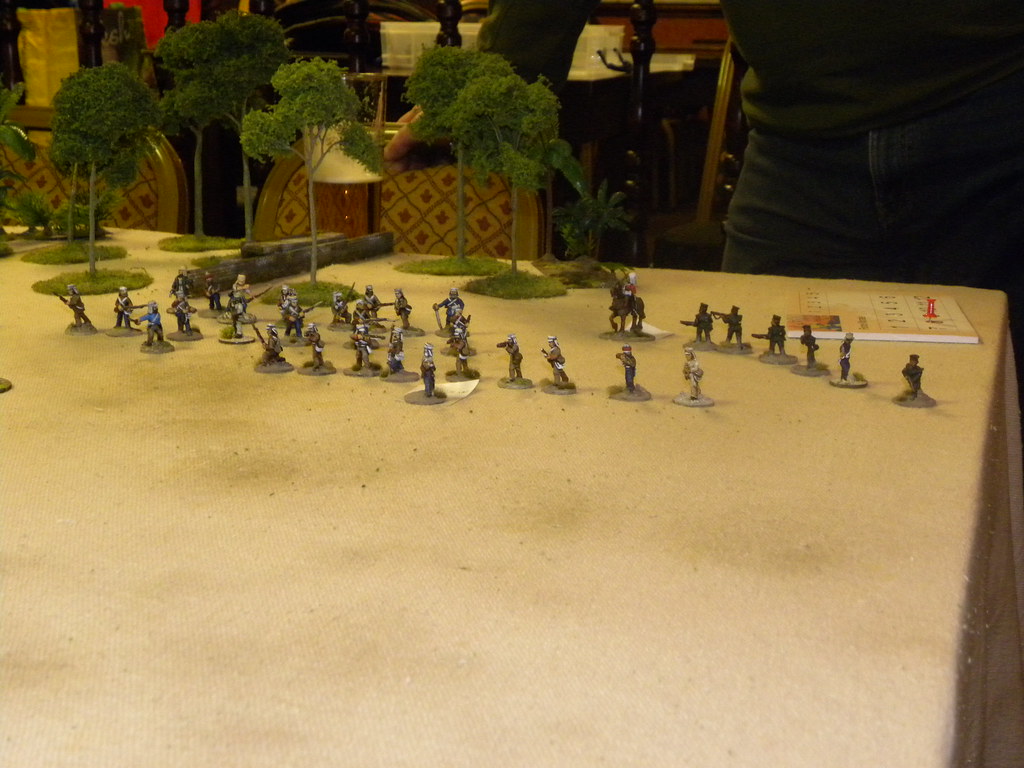
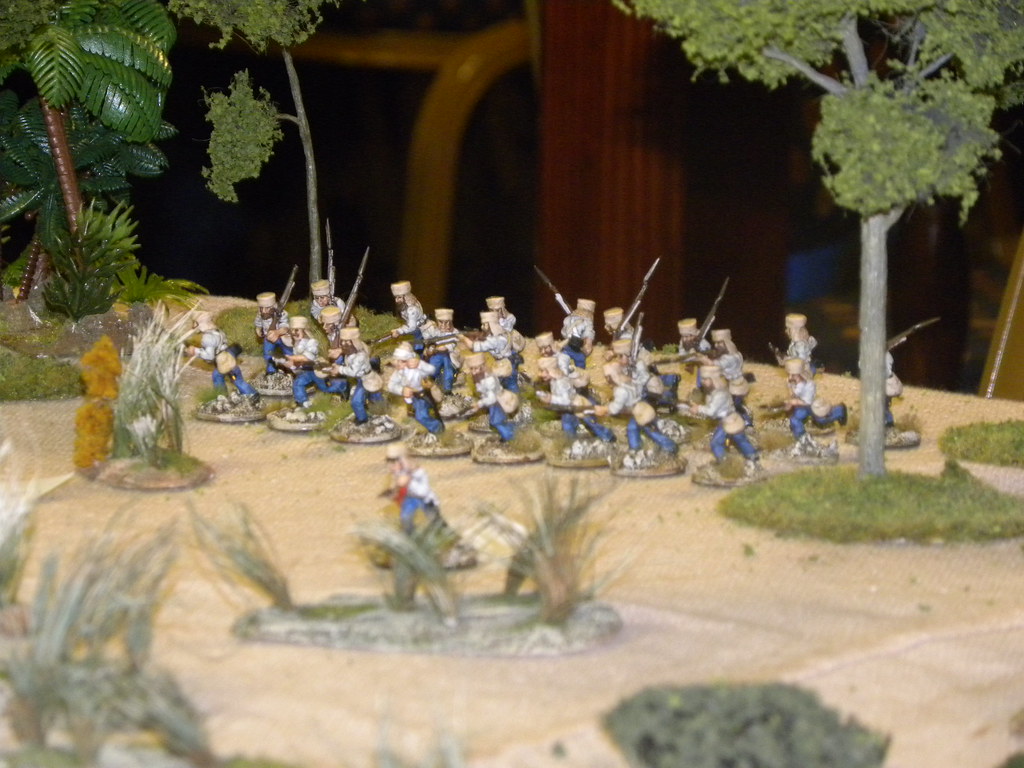

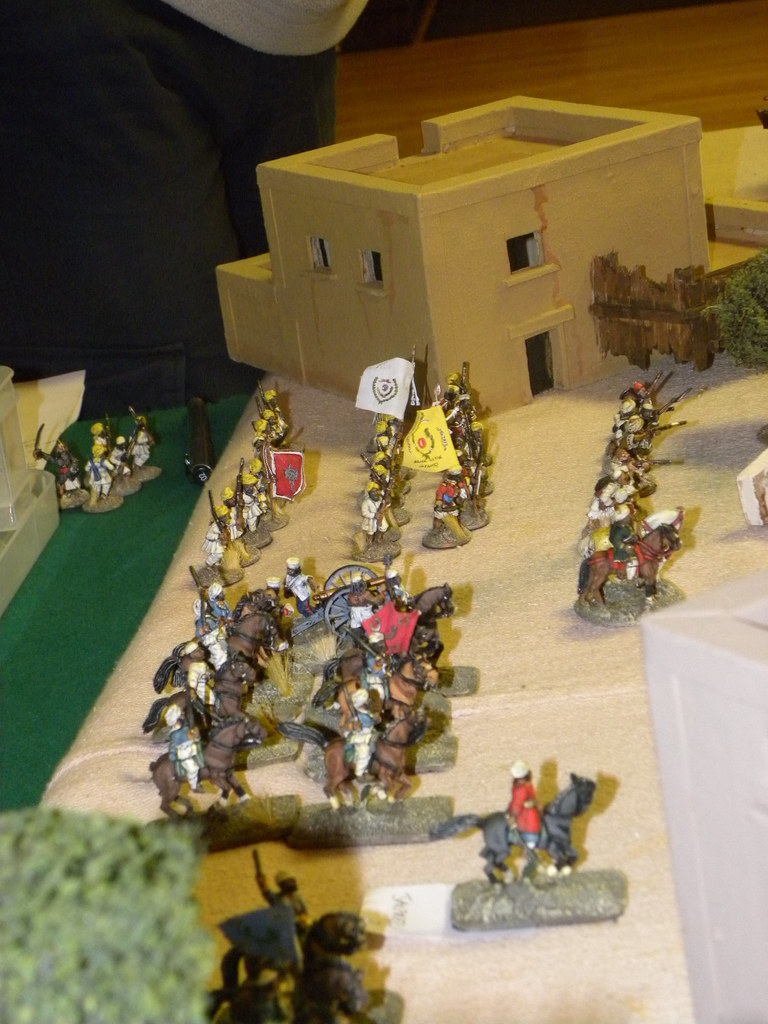

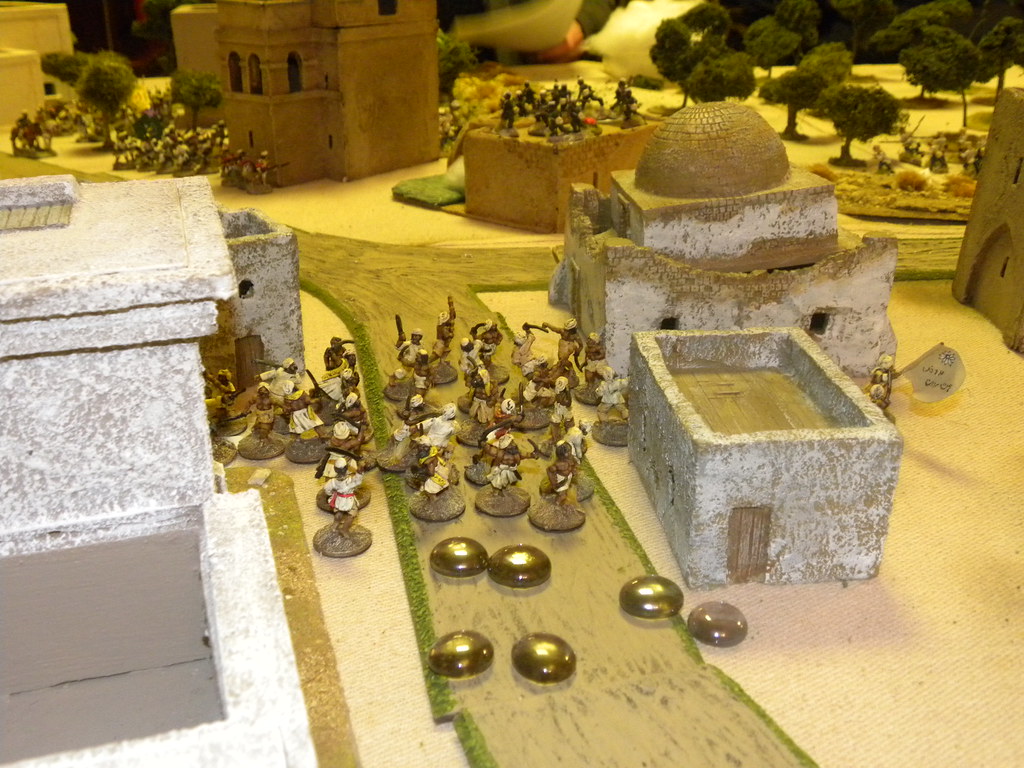
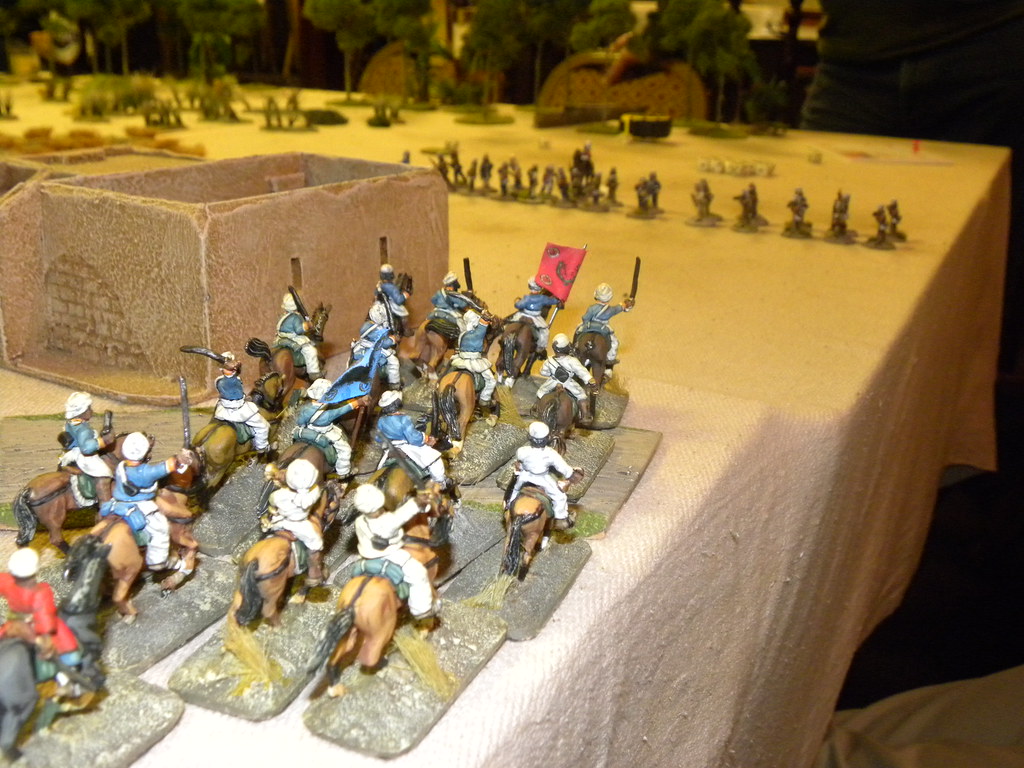
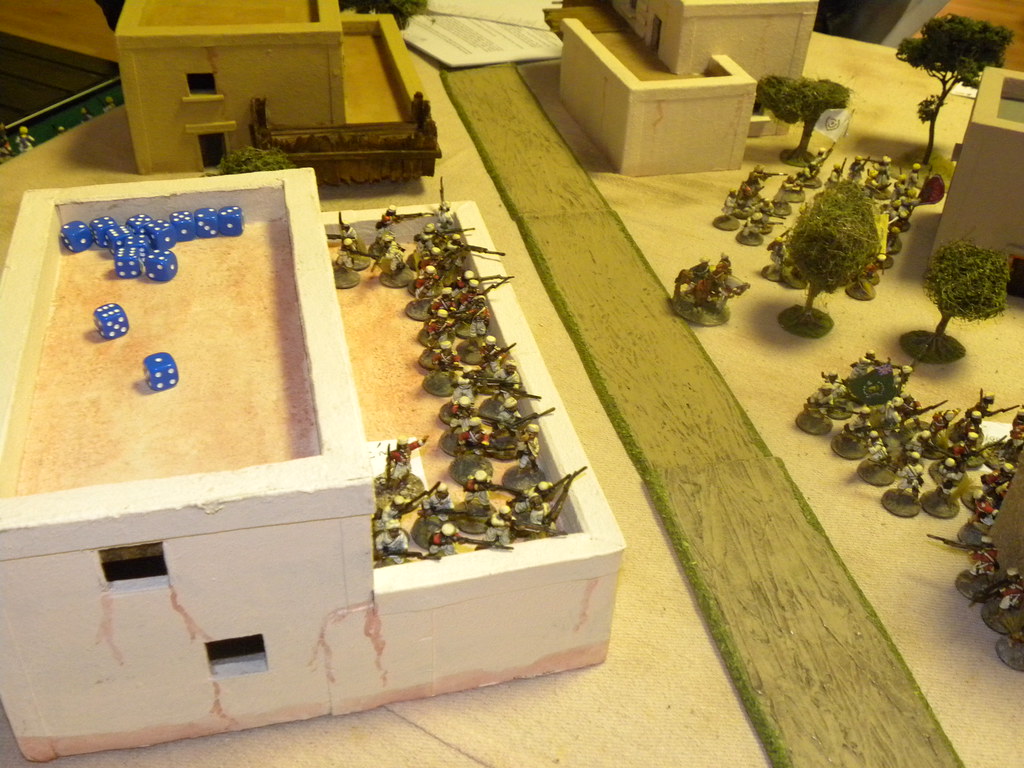
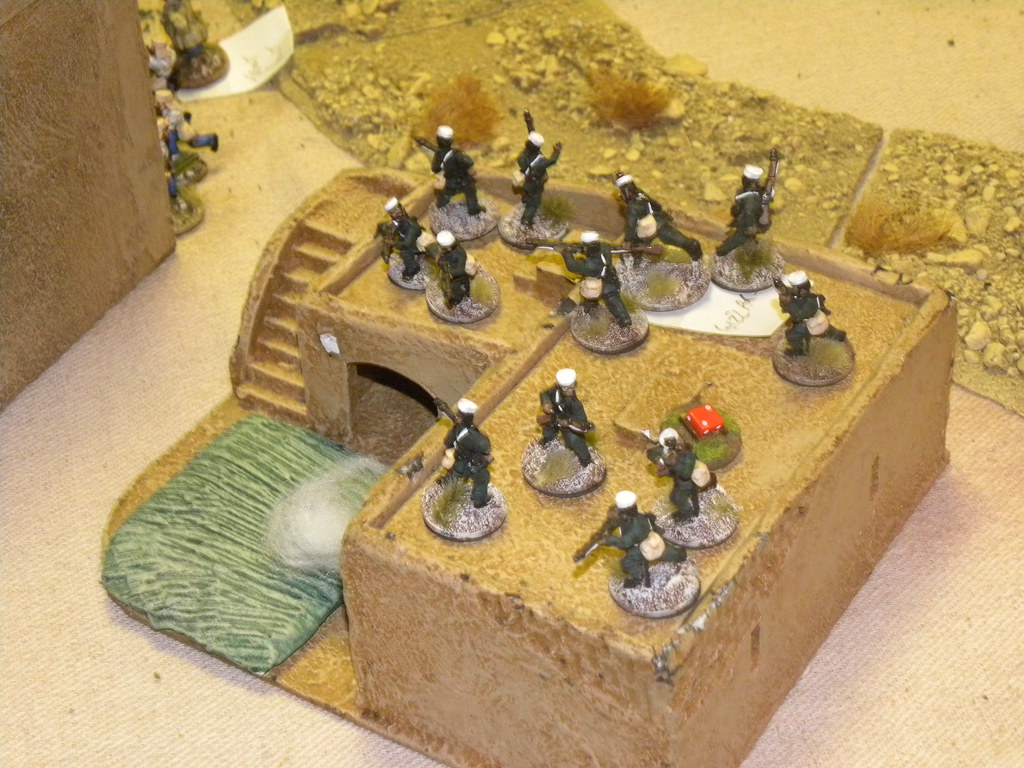
Your tables are always splendid...great looking game!
OdpowiedzUsuńThank you Phil.
UsuńTradycyjne, super czytający się raport! Brawa Bart!
OdpowiedzUsuńThat is an awesome sight Bart!
OdpowiedzUsuńJak zawsze świetne zdjęcia i ciekawy przebieg starcia.
OdpowiedzUsuń